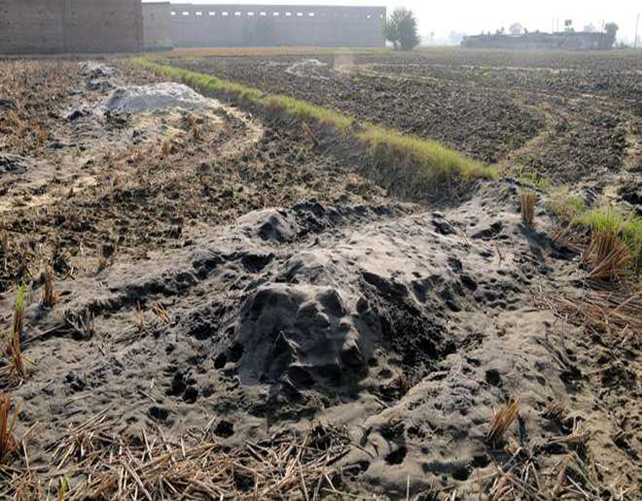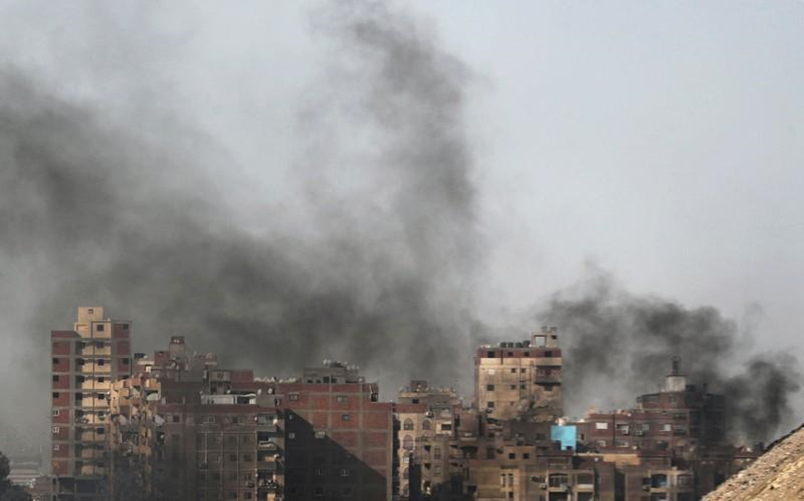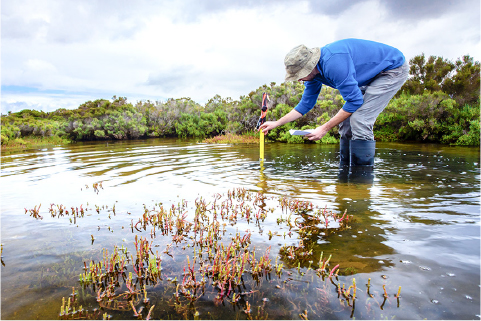研究者紹介
Researcher
生物資源学研究科
共生環境学専攻
ABDELMAGEED ATEF ABDELMAGEED SHEHATA

- 研究テーマResearch theme
- Enhancing Shear Strength for SDGs Ground Improvement.
In this groundbreaking research, we delve into sustainable construction practices by investigating the transformative potential of rice husk ash (RHA) for ground improvement. The global surge in weak expansive soils, particularly in marginalized areas, has spurred our exploration of innovative solutions. Our unique approach involves a minimal cement dosage, a departure from conventional methods, aiming to mitigate environmental impact.
RHA, a byproduct of rice milling industries, takes center stage as a promising soil stabilizer. Unlike traditional stabilizers, our study pioneers a nuanced examination of subgrade layers, introducing a novel perspective in the literature. Sixteen carefully designed specimen combinations of weak expansive soil-RHA-cement undergo comprehensive analysis, including shear stress-shear displacement, cohesion, and internal friction angle assessments.
What sets our research apart is the focus on sustainable ground improvement and the incorporation of advanced analyses like Scanning Electron Microscopy (SEM) and Energy-Dispersive X-ray Spectroscopy (EDS). These analyses provide valuable insights into the microstructural changes within the subgrade layers, unraveling the mechanisms contributing to enhanced soil stability.
This study is a beacon in the construction industry, showcasing the dual benefits of waste repurposing and sustainable ground improvement. By reducing environmental degradation, construction costs, and the consumption of traditional stabilizing materials, we pave the way for a greener and more resilient future in geotechnical engineering. Join us on this journey of innovation and sustainability as we redefine the landscape of ground improvement practices.

Husk ash dumped near the grain market in Karnal, India.

The black cloud hits again, and rice husk is to blame. Cairo, Egypt.
- 研究内容の概要Overview
- Ground improvement is a crucial aspect of geotechnical engineering, particularly when the soil at a selected site lacks the desired structural properties such as cohesion, internal angle of friction, and bearing capacity. Unstable soil can lead to catastrophic consequences, including slope failures, foundation sinkage, and even the complete collapse of structures like tunnels, mine dumps, and buildings.
Several methods are used to improve ground conditions for safe and reliable construction. Based on the treatment method, the engineering techniques of ground improvement can be broadly grouped into mechanical and chemical stabilization. Among these, mechanical stabilization is the most common and oldest technique of ground improvement, where the soil's density is increased by applying mechanical force and compacting the surface layers by static and dynamic loading. Mechanical methods are more complex and expensive than chemical processes.
In chemical stabilization, ground improvement is achieved by mixing various chemicals, for example, cement and lime, with soil to develop desirable characteristics. These methods have shown a long-term change in ground properties. Still, some environmental concerns are usually associated with them.
Cement serves as a crucial binding material in the construction industry. However, it is characterized by its high cost, substantial energy consumption, depletion of natural resources, and significant emission of greenhouse gases into the atmosphere. The production of one ton of cement results in approximately one ton of CO2 gas emissions, leading to severe environmental contamination and various pollution-related issues.
Many studies have been conducted to search for cementitious, low-priced, readily available cement replacement materials from the cement industry to minimize greenhouse gases for environmental protection.
Predominantly, one of the cement replacement materials gaining research attention is rice husk ash made from rice husks, a product of rice milling. If not properly disposed of, it can lead to the potential piling up of waste material and contribute to environmental pollution and health hazard problems.
RHA comprises the highest amount of amorphous silica among all agricultural wastes. The content of SiO2 in RHA is more than 70%, and it can go up to more than 90%, especially under controlled combustion temperature conditions. Moreover, the morphology of SiO2 in RHA subjected to low-temperature combustion consists of nano-sized amorphous particles, which exhibit very high pozzolanic activity similar to silica fume. This means that RHA has a potential gelling activity to promote the generation of cementitious hydration products as C-S-H/C-A-S-H under certain conditions.
Many researchers have discovered that adequately utilizing locally obtainable RHA as a pozzolanic material in ground improvement can decrease environmental degradation and construction price and increase soil strength properties. The amorphous silica (SiO2) in RHA chemically reacts with free calcium hydroxide Ca(OH)2 in the secondary hydration reaction of cement. It forms the calcium silicate hydrate (C-S-H) gel, which improves the strength and durability of soil.
Researchers have found that using RHA in construction projects can diminish CO2 emissions by reducing the production of cement, waste disposal problems, environmental pollution, construction costs, and consumption of natural resources, and can increase the strength and durability of concrete and soil.
Additionally, RHA can effectively improve soil shear strength, indicating the potential for economic and environmental benefits. Moreover, Incorporating RHA into geotechnical engineering practices allows us to contribute to a sustainable future by mitigating waste, reducing carbon emissions, and fostering the principles of sustainable development.
Furthermore, our study uniquely emphasizes minimal cement dosage, a distinguishing feature that differentiates it from the prevailing literature. Most existing research has primarily focused on the impact of combining rice husk ash with cement to stabilize cohesionless soils, leaving exploring its effects on weak clay soils and subgrade utilization relatively underexplored. This distinctive approach underscores our commitment to providing innovative solutions for sustainable ground improvement while efficiently managing construction materials, making it an essential contribution to the field. On the other hand, investigating subgrade layers and their influence on the overall shear strength of RHA-cement stabilized soils has remained a relatively unexplored area in the existing literature.
An experimental study was conducted to evaluate the shear strength of this new construction material. Sixteen specimen combinations of weak expansive with well-defined subgrade layers of soil-RHA-cement were investigated to understand the effects of RHA and cement on the shear strength parameters. The admixtures for each subgrade were prepared by mixing soil with 2%, 4%, and 6% RHA and 2%, 4%, and 6% cement. The upper, bottom, and subgrade double layers were used. A comprehensive analysis of the shear stress-shear displacement relationship, cohesion, and internal friction angle was done.
- 研究成果をどのように社会に役立てるか
(還元の構想)Giving back to society - The research results can benefit society in several meaningful ways, embodying the concept of giving back. Here are some potential ways our research can contribute to societal well-being:
Environmentally Friendly Construction Practices:
The minimal cement dosage approach and rice husk ash (RHA) as a soil stabilizer contribute to more sustainable and environmentally friendly construction practices. This can lead to reduced carbon emissions, lower construction costs, and a decreased reliance on traditional stabilizing materials. Implementing these practices in construction projects can positively impact the environment.
Waste Reduction and Recycling:
Our research promotes waste reduction and recycling by repurposing rice husk ash, a byproduct that might otherwise contribute to waste accumulation. This aligns with sustainability principles and supports efforts to minimize the environmental footprint of construction activities.
Improved Infrastructure Stability:
Enhancing soil stability through our research findings can result in more robust and durable infrastructure. This directly impacts the safety and longevity of buildings, roads, and other structures--the community benefits from improved infrastructure that withstands environmental challenges and serves its intended purpose effectively.
Lower Construction Costs:
Using sustainable soil stabilizers, such as RHA, can lower construction costs. This can make construction more accessible, particularly in marginalized areas with limited economic resources. Lower costs can facilitate the development of essential infrastructure, contributing to overall societal development.
Knowledge Sharing and Education:
Our research outcomes can be disseminated through educational programs, workshops, or training sessions for professionals in the construction industry. By sharing knowledge and promoting the adoption of sustainable practices, you contribute to building a skilled workforce that values environmental considerations and adopts innovative approaches in construction.
Community Engagement and Collaboration:
Actively involving local communities in implementing sustainable ground improvement practices fosters a sense of ownership and collaboration. This engagement can lead to the development of community-driven projects that address specific needs and priorities, positively impacting the lives of the people involved.
Promotion of Sustainable Development Goals (SDGs):
Our research aligns with crucial Sustainable Development Goals, such as responsible consumption and production, climate action, and sustainable cities and communities. Contributing to these global objectives makes our work part of a broader movement towards a more sustainable and equitable world.
By integrating these considerations into disseminating and applying our research results, we can actively contribute to the betterment of society and exemplify the concept of giving back through our academic endeavors.



